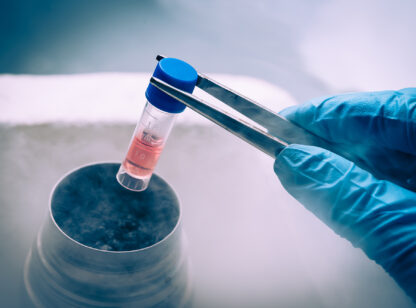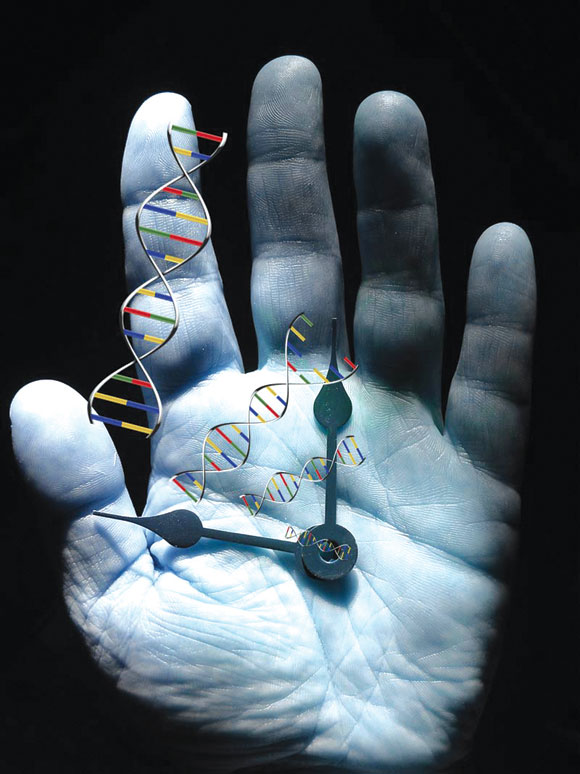Why do we age? Your body is made up of about 10 trillion cells that form our tissue, organs, blood, etc. Each cell has an essential part called mitochondria which makes energy for the cell to use and a nucleus containing DNA to indicate how the cell should function. As our cells die or replicate, we lose a little bit of our telomeres (DNA length) each time. Telomere length represents our biological age as opposed to our chronological age. The more our DNA repairs by replication, the shorter the lifespan of the cell. As we age, oxidative stress from toxin exposures from the environment, smoking, what we eat and drink, and life stressors in general, can damage our DNA even faster, causing us to age faster, not counting our genetic health predispositions.
Nicotinamide adenine dinucleotide (NAD) is one of the most important molecules involved in aging. It is used in every cell of your body and has been shown to decrease with age. NAD has multiple functions, but the top three anti-aging mechanisms are: 1) promoting DNA repair by acting as fuel for the repair enzyme (PARP-1) that is triggered by DNA damage; 2) maintaining telomere length by activating sirtuins, a DNA regulator; 3) NAD is a crucial precursor to ATP, our cell’s major energy source. With these crucial processes, NAD has been shown to slow cellular aging by reducing oxidative stress and inflammation and by improving cardiovascular and brain function, mitochondrial function, mood stability, and metabolic disease.
What’s the best way to increase NAD?
Historically, research has shown that calorie restriction and exercise increases NAD. Currently, there are several ways of improving NAD levels. NAD is not stable taken orally; however, oral supplementation of NAD precursors such as nicotinamide riboside (NR), nicotinamide mononucleotide (NMN), niacin (B3), and nicotinamide can help increase NAD indirectly. A stable intravenous (IV) infusion form of NAD used in a clinical setting can directly increase levels. Although NAD is not yet FDA-approved, there are several human trials of NAD precursors underway globally, and preliminary studies show promising results.
As with any supplement or medication, ask your integrative doctor or pharmacist before introducing any new product.
Dr. Sonja Fung is a primary care naturopathic doctor with expertise in integrative cancer care, regenerative joint injections, nutrition, and IV nutrient replenishment. She is the owner and medical director at Live Well Clinic in La Quinta and can be reached at (760) 771.5970. www.livewellclinic.org
Sources: 1) Capuani B., Pacifici F., et al. Cellular Repair and Reversal of Aging: the Role of NAD. CellR4 2014; 2 (2): e852. http://www.cellr4.org/article/852; 2) Mills KF, Yoshida S, Stein LR, et al. Long-Term Administration of Nicotinamide Mononucleotide Mitigates Age-Associated Physiological Decline in Mice. Cell Metab. 2016; 24(6):795-806. https://www.ncbi.nlm.nih.gov/pubmed/28068222; 3) Imai SI, Guarente L. It takes two to tango: NAD+ and sirtuins in aging/longevity control. NPJ Aging Mech Dis.2016; 2:16017. https://www.ncbi.nlm.nih.gov/pmc/articles/PMC5514996/; 4) Crowley CL, Payne CM, et al. The NAD+ precursors, nicotinic acid and nicotinamide protect cells against apoptosis induced by a multiple stress inducer, deoxycholate. Cell Death and Differentiation. 2000: volume7:314–326. https://www.nature.com/articles/4400658; 5) Tsubota, K. The first human clinic study for NMN has started in Japan. npj Aging and Mechanisms of Disease 2, Article number: 16021 (2016). Trial registration number UMIN000021309: Assessment of the safety of nicotinamide mononucleotide (NMN) in healthy subjects; phase I study. The clinical trial to evaluate metabolic-syndrome-related parameters to develop NMN as Foods with Function Claims. Available at https://upload.umin.ac.jp/cgi-open-bin/ctr/ctr.cgi?function=brows&action=brows&type=summary&language=J&recptno=R000024575. Accessed 23 September 2016. https://www.nature.com/articles/npjamd201621; 6) Bonkowski MS, Sinclair DA. Slowing ageing by design: the rise of NAD+ and sirtuin-activating compounds. Nat Rev Mol Cell Biol. 2016; 17(11):679-90. https://www.ncbi.nlm.nih.gov/pubmed/27552971; 7) Gomes, A. Price, N. et al. Declining NAD+ Induces a Pseudohypoxic State Disrupting Nuclear-Mitochondrial Communication during Aging. Cell, 2013. http://dx.doi.org/10.1016/j.cell.2013.11.037; 8) Wang, S.; Xing, Z. et al. Cellular NAD Replenishment Confers Marked Neuroprotection Against Ischemic Cell Death- Role of Enhanced DNA Repair. Stroke. 2008;39:2587-2595; 9) Poljsak B, Milisav I. NAD+ as the Link Between Oxidative Stress, Inflammation, Caloric Restriction, Exercise, DNA Repair, Longevity, and Health Span. Rejuvenation Res. 2016. https://www.ncbi.nlm.nih.gov/pubmed/26725653











































Comments (0)